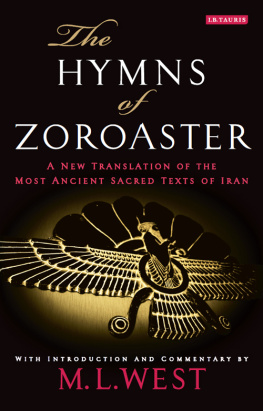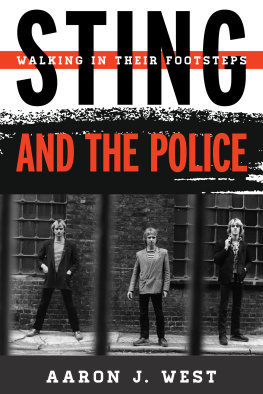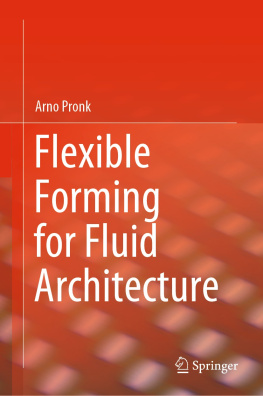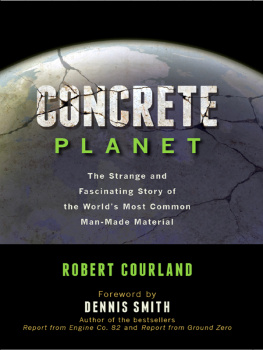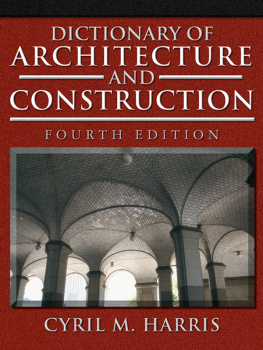The Fabric Formwork Book
Concrete is the most used man-made material in the world and is the fundamental physical medium for most of the world's architecture and construction. The character of concrete is largely the product of the rigid moulds that have shaped it since its invention in antiquity. The advent of flexible moulds, however, marks a radical break from conventional practice and conventional concrete architecture. The Fabric Formwork Book provides the first comprehensive handbook on the emerging technology of flexible moulds for reinforced concrete architecture.
Written by the foremost expert in the field, this book takes a comprehensive and generous approach that includes technical, historical and theoretical aspects of the subject. The book:
- concentrates on simple flat-sheet formworks
- contains detailed technical descriptions of how to construct a wide range of formworks for various applications
- features case studies from around the world
- critiques the difficulties and advantages in each case it covers
- provides instruction and guidance on how to model and design fabric-formed structures
- includes the most comprehensive history of fabric formwork yet published
- features essays from guest expert authors, which explore the theoretical, historical, and poetic significance of flexibly formed architecture and structures
- discusses fabric formwork as an exemplary approach to sustainable construction through its simplicity and efficiency.
Beautifully designed and illustrated with a superb range of images, diagrams and technical drawings, the book both informs and inspires. Speaking directly and plainly to professionals, students and academics, the language used is both clear and precise, and care is taken to avoid opaque technical or academic jargon. Technical terms, when used, are clearly described and a special glossary is included to make the book as widely accessible as possible.
Mark West is an artist, builder, professor of architecture, and inventor of numerous flexible mould techniques for concrete construction. He was the founding Director of the Centre for Architectural Structures and Technology (CAST) at the University of Manitoba, and is currently a visiting professor at the Massachusetts Institute of Technology, as well as teaching at other schools of architecture and engineering internationally.
www.routledge.com/9780415748865
" Fabric Formwork inspires us to seek poetry in the practical. With this beautiful book, Mark West demonstrates an original, magical, and sustainable approach to shaping one of the world's oldest man-made building materials. He and his co-authors offer an encyclopedic introduction to the counterintuitive, yet persuasively sensible, use of fabric to shape concrete."
Kim Tanzer, FAIA, Professor Emerita of Architecture, University of Virginia
"With research becoming central to many emerging architectural practices, Mark West represents one of the few academics with decades of accomplished work bridging design with material sciences. The Fabric Formwork Book radicalizes our conception of what architecture can become."
Nader Tehrani, Principal of NADAAA, and Dean of the Irwin S. Chanin School of Architecture
The Fabric Formwork Book
Methods for Building New Architectural and Structural Forms in Concrete
Mark West
First published 2017
by Routledge
2 Park Square, Milton Park, Abingdon, Oxon
OX14 4RN
and by Routledge
711 Third Avenue, New York, NY 10017
Routledge is an imprint of the Taylor & Francis Group, an informa business
2017 Mark West
The right of Mark West to be identified as author of this work has been asserted by him in accordance with sections 77 and 78 of the Copyright, Designs and Patents Act 1988.
All rights reserved. No part of this book may be reprinted or reproduced or utilised in any form or by any electronic, mechanical, or other means, now known or hereafter invented, including photocopying and recording, or in any information storage or retrieval system, without permission in writing from the publishers.
Trademark notice : Product or corporate names may be trademarks or registered trademarks, and are used only for identification and explanation without intent to infringe.
British Library Cataloguing-in-Publication Data
A catalogue record for this book is available from the British Library
Library of Congress Cataloging-in-Publication
Data
Names: West, Mark, 1953- author.
Title: The fabric formwork book: methods for
building new architectural and structural forms
in concrete / Mark West.
Description: New York: Routledge, 2016. |
Includes bibliographical
references and index.
Identifiers: LCCN 2015039813 ISBN
9780415748858 (hardback: alk. paper) | ISBN
9780415748865 (pbk.: alk. paper) | ISBN
9781315675022 (ebook)
Subjects: LCSH: Concrete construction-
Formwork.
Classification: LCC TA682.44 .W47 2016 | DDC
624.1/834--dc23
LC record available at http://lccn.loc.gov/2015039813
ISBN: 978-0-415-74885-8 (hbk)
ISBN: 978-0-415-74886-5 (pbk)
ISBN: 978-1-315-67502-2 (ebk)
Typeset in Helvetica Neue by
Servis Filmsetting Ltd, Stockport
To Nada for everything
Contents
This book contains the work of many people. There are, of course, the chapter authors, or co-authors, to whom I am deeply grateful for the time and dedication they have given to their contributions. Others are acknowledged in the text throughout the book, but all told, there are far too many to be named. These include the many students of architecture and engineering who have worked with me over the past quarter century, building, playing, designing and testing many of the techniques contained here.
I must acknowledge, in particular, the research assistants and thesis students who worked with me at the Centre for Architectural Structures and Technology (CAST) at the University of Manitoba. These include (in alphabetical order): William Alston; Steven Berry; Ken Barton; Chad Connery; Jordy Craddock; Steven Faust; Mojtaba Hosseini; Michael Johnson; Jeff Machnicki; Aleksandr Olivson; Neil Prakash; Jason Robins; Joshua Rudd; Kerri West; Jiameng Zeng.
Special thanks go to CAST Research Assistants Aleksandra Chomik; Leif Friggstad; Fariborz Hashemian; Aynslee Hurdal; Kyle Martens; Sean Sinclair; and Chris Weibe, who, at one time or another, each held the metaphoric and physical key to CAST.
Thanks to David Witty, Ian MacDonald, Nat Chard and Frank Fantauzzi, who supported my work at the University of Manitoba and especially to Faye Hellner. I owe you more than I can say.
Many of the techniques included in this book were developed with financial support from the Social Sciences and Humanities Research Council of Canada (SSHRC), the Canada Foundation for Innovation (CFI) and the Canada Council for the Arts. Support for technical and engineering research was provided by the Natural Science and Engineering Research Council of Canada (NSERC) and the Cement Association of Canada (CAC).
Crucial supported has also been provided by the many construction companies who helped build the CAST Laboratory, which has contributed so much to the advancement of this field. Smith Carter Architects, and the Canadian Precast Concrete Institute (CPCI) Manitoba Chapter have given crucial support as well. In particular, I would like to thank Andy Dutfield, Peter Schuster and Gerry de Roquigny of the Lafarge Building Materials Group, Winnipeg, MB for their extraordinary support over many years.


